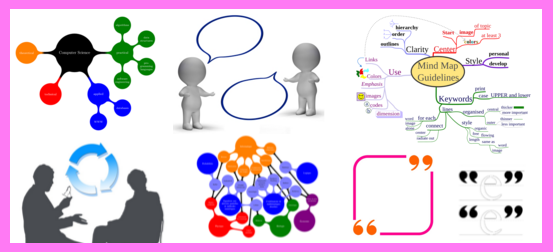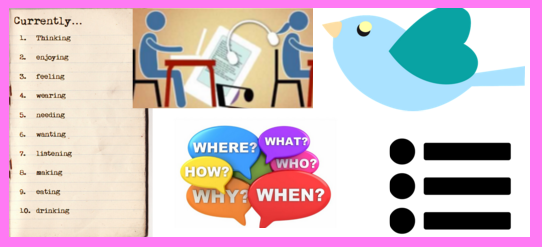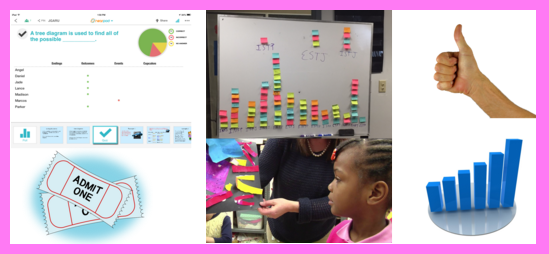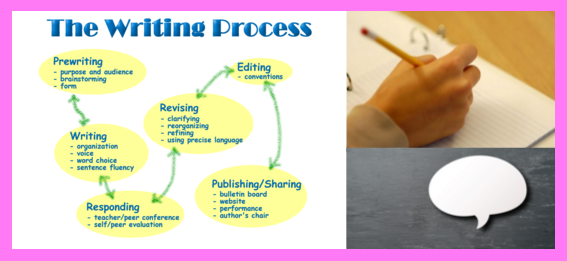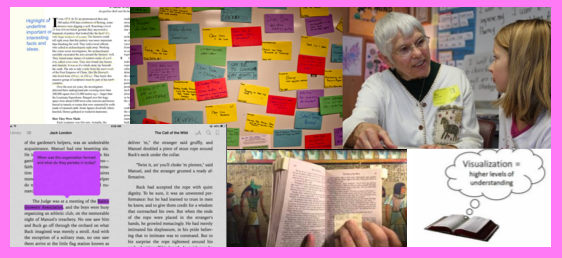

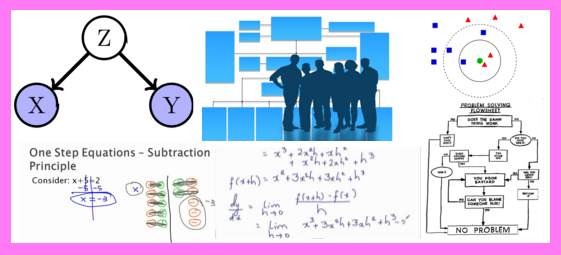
- Problem recognition tasks
- Description
- Student classify problem by the type of problem each example represents.
- Purpose
- Student practice diagnosing problems.
- Students practice recognizing different problem types.
- Step-by-Step Procedure
- Choose sample problems that are often confused but are distinguishable by different problem types.
- Decide whether you will let students select problem types using matching or by keeping task open-ended.
- Do a run-through with another teacher to make sure they agree with your classification of the problems.
- Give students class time to classify the problems.
- Analysis Steps
- Tally number of incorrect and correct responses.
- Extension Ides
- Allow students to diagnose problems in small teams.
- Encourage students to come up with parallel examples of each problem types.
- Ask students to explain in detail what features to look for when selecting different problem types
- Assign complex problems that go with multiple problem types and have students use excerpts to describe which parts go with which problem solving type
- Pros
- Quick way to assess students’ diagnostic skills
- Can help students generalize problem solving types so they can apply these types to solve unfamiliar problems
- Cons
- Many real life problems involve multiple approaches – so it’s hard to relate them to this strategy
- Diagnosing a problem correctly does not mean that you can fully resolve it
- Caveats
- May need to present simplified problems in order to limit diagnosis to one problem type
- May need to model this skill because it is often not explicitly taught
- Description
- What’s the Principle?
- Description
- Students identify the principle needed to solve a problem
- Purpose
- Students practice associating basic principles to problems rather then learning how to solve problems in isolation
- Step-by-Step Procedure
- Identify basic problem solving principles that been taught in the course
- Find or create sample problems that demonstrate these principles
- Create What’s the Principle form for students to list the principle that goes with the numbered problem (can do this in google docs for easy of analysis)
- Test assessment on another teacher to see if there is agreement on basic principles that go with each example
- Give students class time to complete the What’s the Principle form
- Analysis Steps
- Tally number of correct and incorrect responses
- Extension Ides
- Provide students with the principles and have students come up with examples and non-examples for each
- Give students only examples and have them diagnose the basic principles in each
- Have students justify their choices with a sentence or two
- Pros
- Simple way to assess students’ diagnostic skills
- Quick feedback on student’s ability to apply general principles to specific problems
- Practice transferable problem solving skills
- Cons
- If students don’t understand purpose of assignment may view is as a lower order matching task
- Skills in matching problems to general principles does not mean that students can fully solve problems
- Caveats
- Not good with beginners who lack experience to generalize principles to specific cases
- Not good with advanced students who are more interested in gray areas where no general principles apply
- May need to model this skill if it has not been explicitly taught for students
- Description

Teaching students how to diagnose problems and connect them back to general problem types and principles is a valuable problem solving skill that is often not explicitly taught. Completing diagnostic tasks can make students more aware of the features ands strategies needed or properly apply general types and principles to specific problems.

Preparation Steps
- Expose students to several problem types and principles.
- Develop sample problems that can be categorized by type or principle.
Early Implementation Steps
- Model how to categorize problems by type or principle.
- Give students time to practice this skills using one of the assessments above.
- Analyze their responses and use these to develop responses that fine tune students’ abilities to correctly diagnose problems.
Advanced Implementation Steps
- Use one of the extension activities described above.
- Let students provide multiple appropriate answers to diagnose how more complex problems might be solved and provide reasoning for their answers.

- Assessments articles
- Mathematics articles
